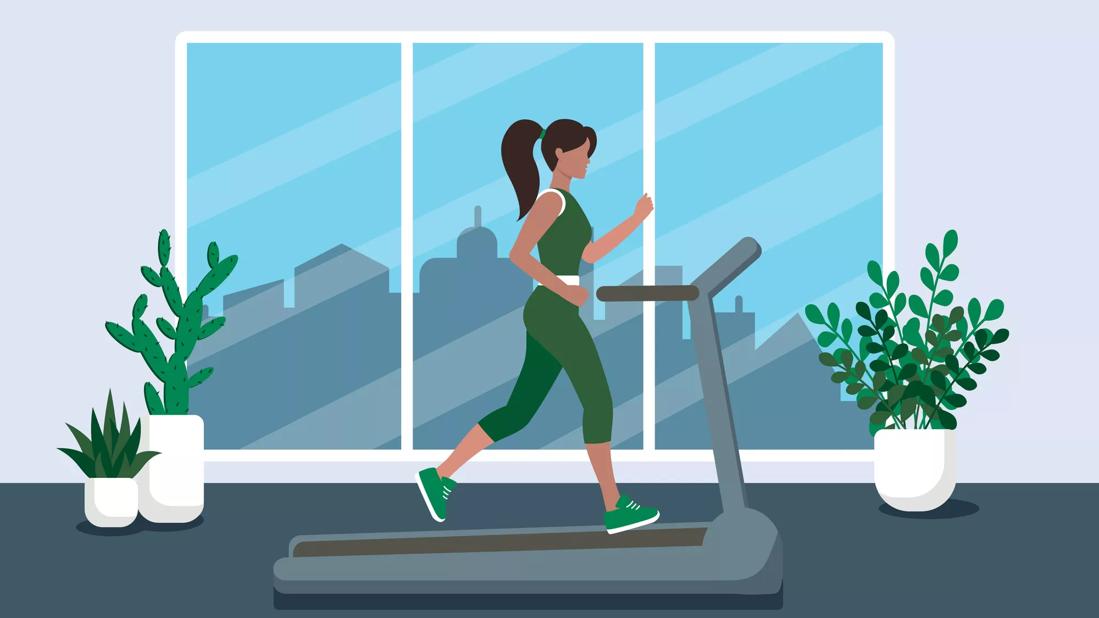Easing up on your routine can help your body recover and get stronger

Sometimes, the trick to getting stronger is doing less.
Advertisement
Cleveland Clinic is a non-profit academic medical center. Advertising on our site helps support our mission. We do not endorse non-Cleveland Clinic products or services. Policy
A “deload week” may be what you need if you work out regularly but somehow feel physically or mentally weaker instead of stronger. When you deload, you back off — just slightly — from your intense workouts.
Exercise specialist Ben Kuharik explains how taking a step back may be the way to move forward.
A deload week isn’t the same as a rest week, which may happen when you stop exercising due to vacation, illness or injury. When you deload, you don’t stop being active. Instead, you change your workout by reducing your regular training intensity or volume.
This isn’t just to help your muscles, by the way. It’s a way to refresh your nervous system.
“Most people think of fatigue as the muscular soreness you get after lifting heavy weights or training for an athletic competition,” says Kuharik. “But strenuous exercise also causes overall fatigue, which strains your nervous system.”
Deloading allows your nervous system to recover, putting you in a position to get stronger and achieve your performance goals.
If you’re training at a high intensity, Kuharik recommends deloading every six to eight weeks. There are various ways to incorporate a deload week into your fitness routine.
You can:
Advertisement
It may seem counterintuitive, but backing off from your usual workout may be the key to making progress. “Some people achieve personal bests when they return to their regular training after deloading,” says Kuharik. “That’s because they’re rested, recovered and focused.”
In one study, participants who took planned breaks from high-intensity resistance training every six weeks gained as much muscle and strength as their counterparts who didn’t deload. And they achieved the same results with 25% fewer training sessions.
A deload week gives your body time to bounce back from:
You’ve worked hard to make fitness gains, so it’s natural to worry that you’ll lose ground by cutting back on exercise for a week. The good news is that you shouldn’t regress in a week.
“It takes two to four weeks of skipped workouts before muscle loss occurs,” clarifies Kuharik.
Research backs this up. One study found that including a deload week midway through a nine-week resistance training program didn’t negatively affect participants’ endurance or power.
Taking a deload week can be as much of a mental challenge as a physical one for some people.
“This is especially true if it took you a long time to get into the habit of exercising,” notes Kuharik. “I tell people to view a deload week as a chance to challenge your body and mind in new ways. You definitely should stay active — just bring it down a notch.”
He recommends using the deload week to strive for different fitness goals. Focus more on your form, for instance, or look to improve your flexibility through stretching, yoga or Pilates.
Most recreational athletes don’t need to deload because they aren’t pushing their bodies to the limit. Of course, you can and should deload (or take a rest week) if you’re ill, injured or simply feel like you need to recharge.
Deload weeks are most beneficial for competitive athletes, like those who:
You may benefit from a deload week if you:
Advertisement
Even though you’re active while deloading, it’s important to gradually ease back into your regular training routine. Don’t just jump back in where you left off. Give your body a chance to readjust.
“Returning immediately to heavier weights or long distances can stress your body and undo the progress you made while deloading,” warns Kuharik.
To safely transition, steadily increase the intensity or volume of your workouts after your deload week. It may take a week or two to comfortably work your way back to your pre-deload starting point.
After that, you may surprise yourself and find that you can lift heavier, move faster or go farther than before. If so, you’ll know your body needed that time to deload.
“You should feel physically and mentally refreshed after a deload week,” encourages Kuharik. “Hopefully, you sleep and eat better during that time, too, and come back feeling more motivated, energized and ready to achieve new fitness goals.”
Advertisement
Learn more about our editorial process.
Advertisement

Lower-intensity workouts can deliver high-quality health and fitness results

Incremental changes in your exercise routine can improve your strength and endurance over time

Understanding heart rate zones can help you tailor your workout to reach your goals

Increase the size of your muscles by bulking up on protein and focusing on slow, intense movements with progressive overloading

Low-impact exercises help you recover faster between sets, during cool downs and on rest days

Eccentric is slow and steady, while concentric is fast and controlled

Weightlifting can help you build muscle mass, reduce joint pain and increase flexibility to improve your quality of life

Abdominal exercises don’t have to be done on the floor!

Babies can get congested easily, but you can calm their cough by keeping them hydrated, using nasal drops and running a humidifier

Weight loss may cause loose, sagging skin and muscle loss to your rear

Several conditions, like vitiligo and fungal infection, can cause a loss of pigmentation, leading to white spots or patches on your skin